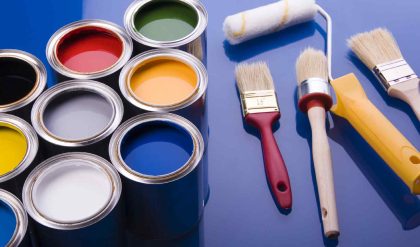
Few building materials match the beauty of a natural stone floor. With its no-two-pieces-look-alike character and durability, stone flooring has been a favorite of homeowners for millennia.
Stone flooring tiles come in many shapes and sizes, from 4×2-foot rectangles to 1-inch-square mosaics. In between, you’ll find many square and rectangular sizes to fit your needs.
Prices run the gamut from a relatively cheap $2 per square foot to an eye-popping $100 per square foot. Most home improvement centers offer a good variety of natural stone flooring in the $2 to $15 per square foot range. Pro installation adds $5 to $15 per square foot.
Marble
Prized for its classic elegance, marble flooring has been around since ancient times. It’s instantly recognizable for its soft grain patterns and creamy colors that range from white to red, green, and black. It’s often polished to a high sheen that shows off its subtle beauty.
Polished marble is slippery when wet and isn’t the best choice for kitchens and baths. Honed marble has more surface texture and is a good alternative, but doesn’t have the dynamic color of polished marble.
Marble is one of nature’s softer rocks and prone to scratching and staining, so professional sealing after installation is recommended.
Travertine
Travertine is a sedimentary rock and is one of the softer varieties of stone flooring. That means over time, travertine will develop a soft, mellow patina. It comes in a wide range of shades and hues, from light cream to dark rust. Polished travertine resembles marble; tumbled travertine is characterized by pits, holes, and rounded edges that give it an antique look.
Travertine flooring is porous and reacts quickly to acidic substances, so even spilled orange juice may cause a stain. Regular application of a stone sealer helps protect travertine flooring.
Granite
Granite is an igneous rock formed under extreme pressure, making it one of the hardest flooring materials. It’s virtually impervious to staining and scratching. It comes in many colors and is found throughout the country — local varieties of granite flooring may be less expensive due to lower shipping costs.
Slate
Slate is a metamorphic rock that was formed in layers, so it easily splits into thin sheets that are cut into tiles. Slate floor tiles can be left with their naturally rough surfaces or honed smooth. The rougher surfaces offer good traction for entryways, sunrooms, patios and kitchens. Color-wise, slate tends toward blends of dark green, gray and brown.
Slate comes in various densities. The denser the slate, the less likely it is to chip or flake in a process called “spalling.” A bit of spalling is common in un-honed slate. Denser slates cost more.
Limestone
Limestone is a cousin of travertine, although it’s somewhat harder and over time will stand up better to everyday use. It has striking grain patterns that, when cut into long, narrow tiles, resemble wood planks.
It’s a porous stone and should be protected with a quality stone sealer to prevent stains. Re-seal limestone flooring every few years to maintain protection.






Comments are closed.